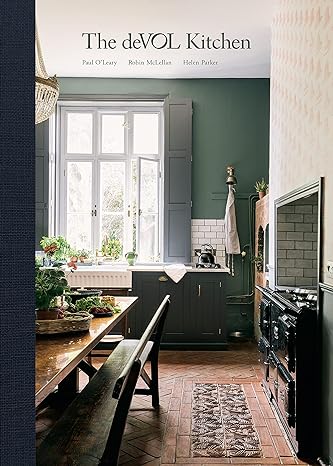This traditional European kitchen feature is making a comeback – but what exactly is a scullery?
This historic kitchen layout dates back centuries, but it's just as relevant in 2024
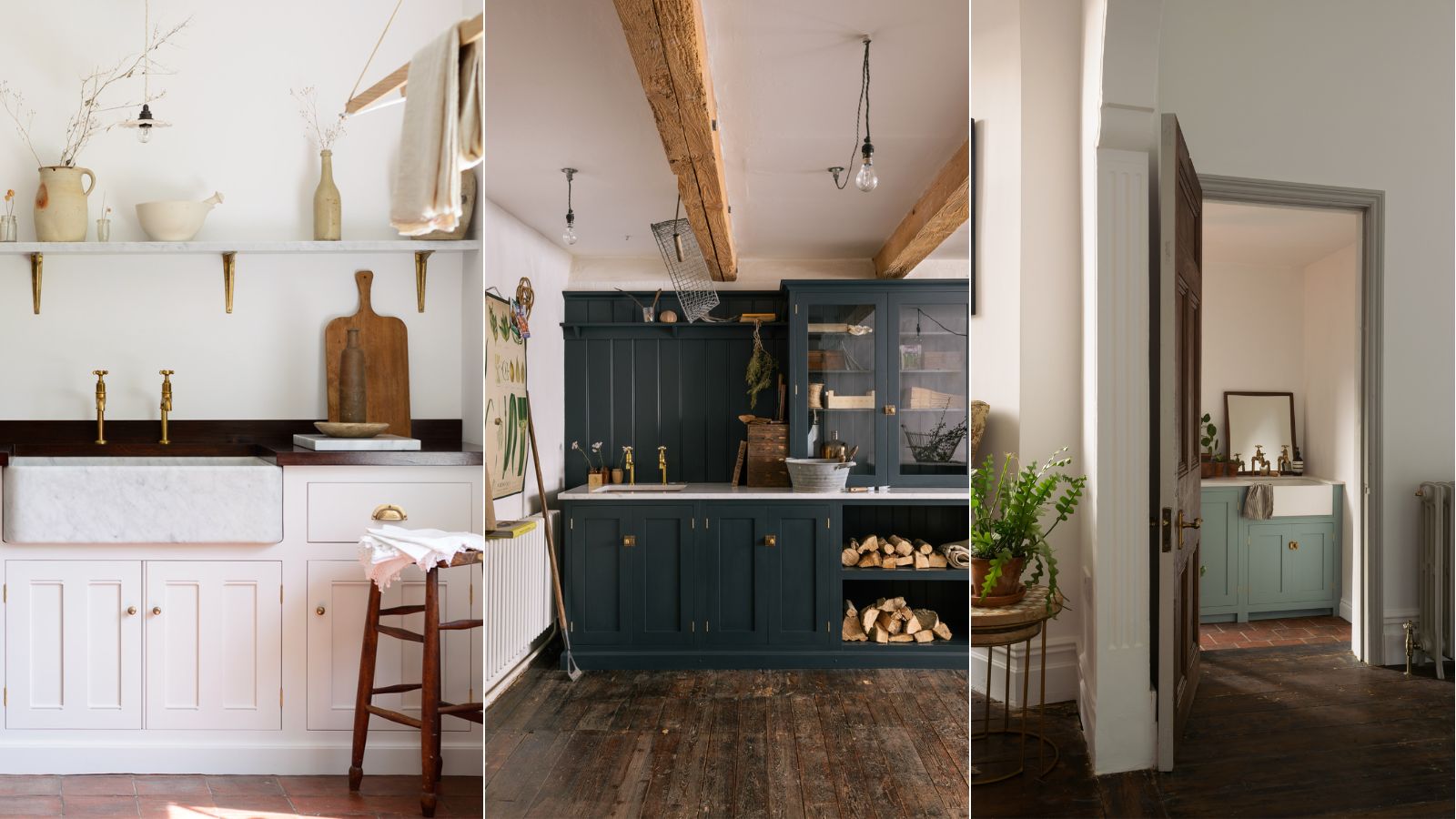

When it comes to kitchens, there's a lot to learn from old homes. Traditional kitchens – more specifically those found within grand, country British homes in the Victorian period – have iconic layouts and features that kitchen trends are referencing in 2024, for both practical and stylistic reasons.
Sculleries, butler's pantries, and utility rooms are all familiar terms that fall under the broader umbrella term of 'overflow kitchens'. Essentially, all of these rooms historically formed a key part of large homes, each serving as a practical space for cooking, cleaning, and other household jobs, although there are key differences between each of these rooms.
In previous articles, we've explored the design and use of butler's pantries and utility rooms, but here, we're taking a deep dive into the scullery kitchen. With expertise from Helen Parker, Creative Director at deVOL Kitchens, we find out about the history of this old-school kitchen concept and how it can be integrated into modern homes.
'I feel a scullery is a really exciting room as it has such historical significance and yet it can be an incredibly modern and practical room', says Helen. 'It’s often those little additional rooms that become our favorites.'
What is a scullery?
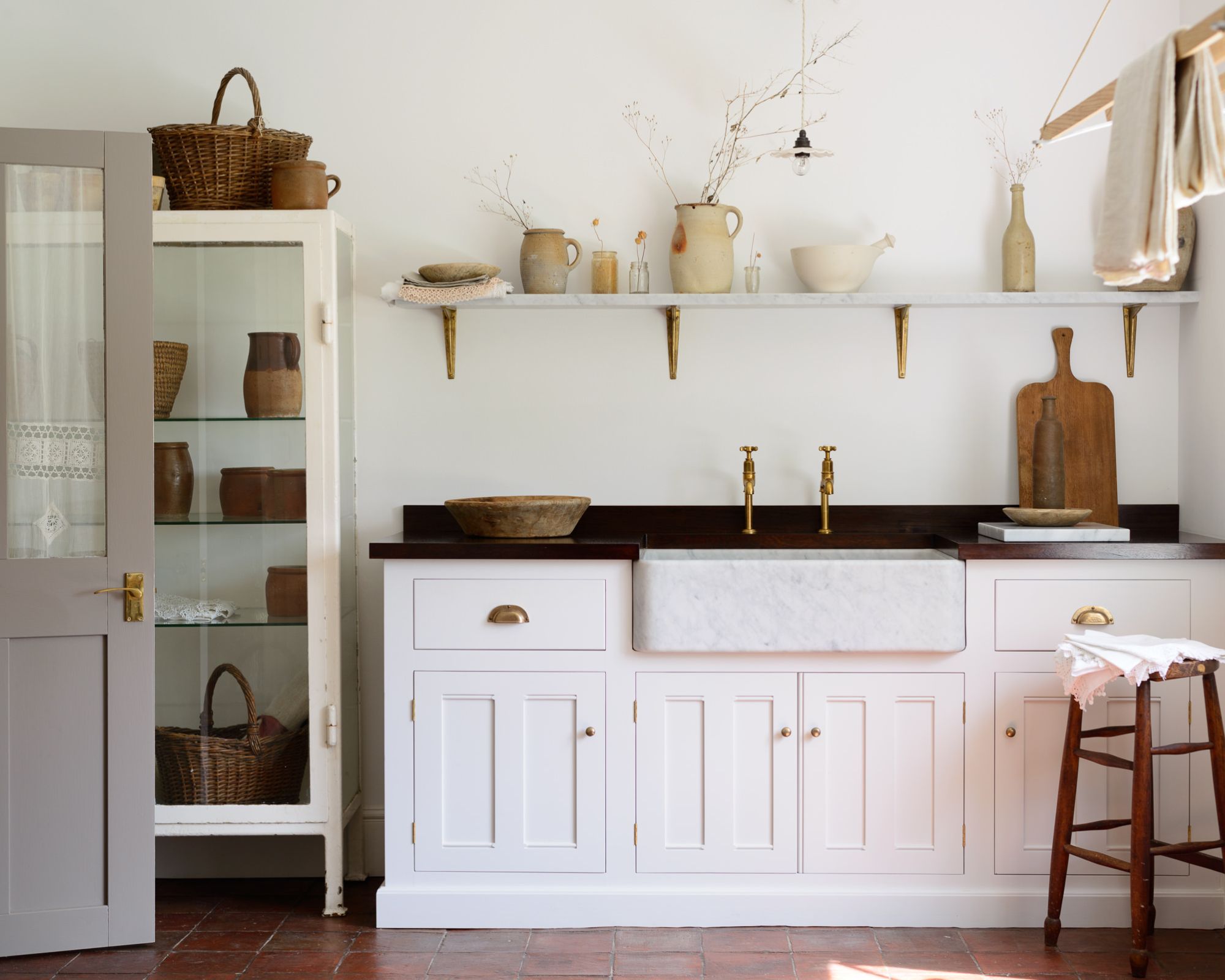
'A scullery was traditionally a room adjoining the kitchen with a door to the backyard of the house,' explains Helen. 'Taken from the Latin word 'scutella' meaning tray or platter, it was a room used for storing large serving dishes and where the menial jobs such as washing up, cleaning, and messy work were undertaken. The scullery maid was the lowest paid worker in the kitchen, hence their role of doing the least skilled and unappealing jobs. It may be likened to a modern-day utility room.'

Helen is the Creative Director at deVOL, a leading kitchen design company that mixes classic and contemporary. Helen has been creative director at the company since 2011, passionate about the signature understated approach deVOL takes to designing kitchens.
While employing kitchen staff is by and large a thing of the past, there's still plenty of reason for the scullery to exist today. You can interpret the purpose of a scullery to best suit your needs, but generally, today we see sculleries as spaces off the kitchen with additional kitchen storage space, extra worktops, and a sink for washing up and cleaning purposes, as pictured above in deVOL's Millhouse Scullery. They're the ideal space to store extra dinnerware or serverware that you don't use every day, or less often reached for kitchen appliances that can take up precious kitchen countertop space.
'For us today, a scullery has a nostalgic ring to it and hence it has become a desirable feature to have in your home,' explains Helen. 'We have often had utility rooms but a scullery is a much more appealing term to use. Like pantries and laundry rooms, a scullery is a practical place for storage of larger items and nowadays even appliances small or large.'
Design expertise in your inbox – from inspiring decorating ideas and beautiful celebrity homes to practical gardening advice and shopping round-ups.
Unlike a back kitchen which is essentially an extension of the kitchen to allow more space for cooking, sculleries don't tend to have an oven or fully-fledged cooking set up, as a back kitchen would.
If you love to entertain friends and family in your home, having this extra space to easily hide away dirty dishes can be incredibly appealing. In modern homes, separate dining rooms are less common, and so having somewhere to hide the unavoidable dinner prep chaos while you entertain in an open-plan kitchen is a major benefit, as Helen points out below:
'For most of us a dining room is now redundant as we do all our socializing and entertaining in our kitchens, so having an extra room just off the kitchen for messy jobs, dirty dishes and overspill of food preparation is practical and allows us to keep our kitchen looking neat and tidy.'
Why are sculleries so popular right now?
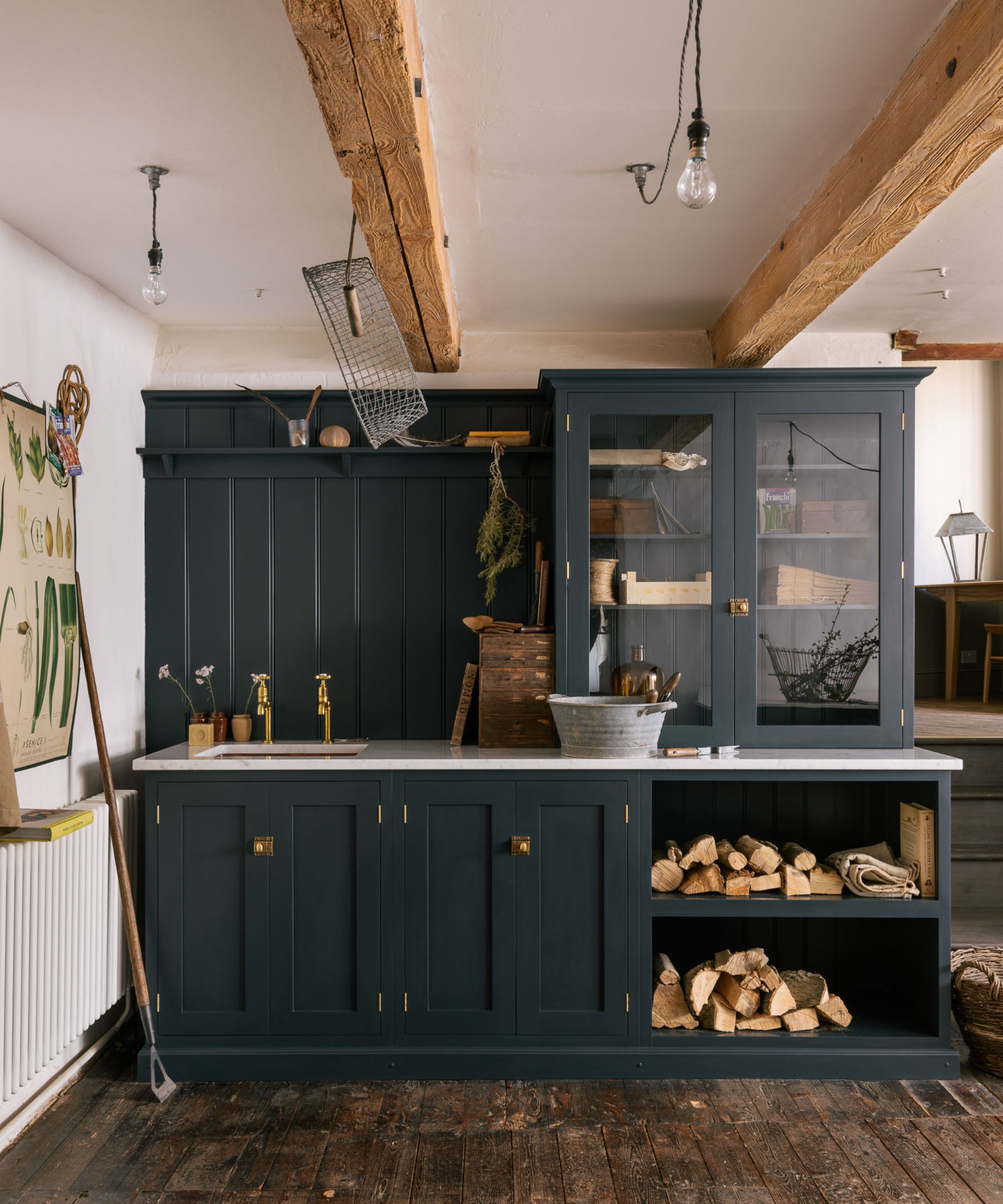
In 2024, interior design trends continue to fully embrace design styles from the past. Particularly in kitchens, the heart of the home, we're seeing more and more of these spaces reflect styles such as farmhouse and traditional which are all about embracing an old-school look with classical design features.
The resurgence of the likes of sculleries goes hand in hand with these kitchen styles, allowing traditional design to lead the way. For those that have a farmhouse kitchen or traditional kitchen, sculleries are an obvious addition if space permits, allowing the main kitchen to reflect more of a cozy, relaxed look while the scullery can become the hardworking space.
Another reason why we're seeing a rise in secondary kitchen spaces such as sculleries, is because they can be a great space to channel creativity. Since kitchens are such a central part of the home and are more often than not costly to design, their design is often fairly understated to ensure a calm, liveable look and feel. In a scullery, you can afford to let creativity lead the way. Since it's not a space where people gather and it can be shut away from the main social space, opting for a splash of bold paint or an experimental wallpaper for example can be that perfect hint of playful decor in your home, without being overbearing.
'Unlike a dated utility room where practicality was all that mattered, nowadays we can be creative and make functional rooms beautiful and practical and a little softer in their appearance,' adds Helen.
How should a scullery be designed?
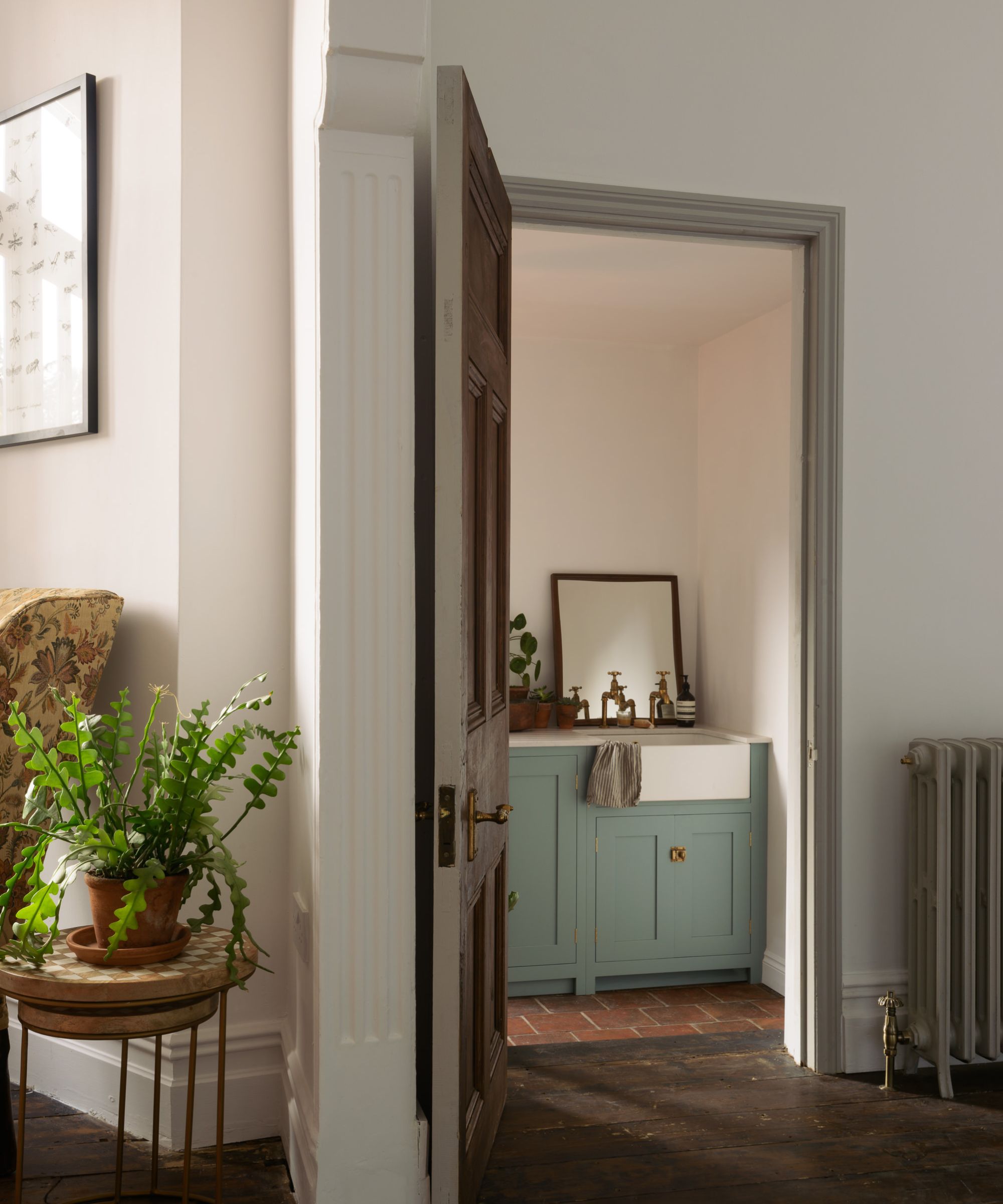
The layout and design of a kitchen is something that is more often than not fairly permanent. Since remodeling a kitchen is a large undertaking, unless you're in the process of renovating, adding a scullery most likely isn't a quick fix. But, if you're lucky enough to have a spare room in the vicinity of the kitchen, consider its use. If you already have a nearby laundry room or storage space, consider how you could add other elements, such as a sink and countertops to allow you to benefit from the practical advantages of a scullery.
If you are thinking of prioritizing a scullery in your home, Helen provides some useful design advice to balance both functionality and style: 'Taking a little queue from traditional sculleries is always a nice way to approach the design of these rooms to give them a little authenticity. I would make sure my scullery felt similar in color and style to my kitchen, but I would add in some utilitarian features to give it its own personality.'
'Large format plain tiles on large areas of the room would be a practical and authentic choice. I would have a stone floor, maybe terracotta or slate and I would have lots of open shelving and storage. A large deep Belfast or brass sink would feel in keeping and simple wall-mounted taps and even a pot filler for buckets and preserving pans.'
'I think fabric skirts around the worktops instead of cupboards would feel right and add some simple pattern to an otherwise quite spartan style. There is something very appealing about utilitarian style and a scullery seems the perfect place to be extra careful about your accessories and styling choices.'
Whether you're considering the addition of a scullery to your kitchen remodel or it's simply something you dream of having one day, sculleries boast a wide range of benefits. If you are in the position to add a scullery to your space, make sure you fully embrace its decor potential and channel a design-centric look for a modern take on this historical kitchen concept.

Emily is a freelance interior design writer based in Scotland. Prior to going freelance in the spring of 2025, Emily was Homes & Gardens’ Paint & Color Editor, covering all things color across interiors and home decor for the Homes & Gardens website. Having gained specific expertise in this area, Emily is well-versed in writing about the latest color trends and is passionate about helping homeowners understand the importance of color psychology in home design. Her own interior design style reflects the simplicity of mid-century design and she loves sourcing vintage furniture finds for her tenement flat.
